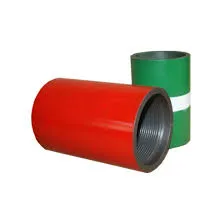- Afrikaans
- Albanian
- Amharic
- Arabic
- Armenian
- Azerbaijani
- Basque
- Belarusian
- Bengali
- Bosnian
- Bulgarian
- Catalan
- Cebuano
- Corsican
- Croatian
- Czech
- Danish
- Dutch
- English
- Esperanto
- Estonian
- Finnish
- French
- Frisian
- Galician
- Georgian
- German
- Greek
- Gujarati
- Haitian Creole
- hausa
- hawaiian
- Hebrew
- Hindi
- Miao
- Hungarian
- Icelandic
- igbo
- Indonesian
- irish
- Italian
- Japanese
- Javanese
- Kannada
- kazakh
- Khmer
- Rwandese
- Korean
- Kurdish
- Kyrgyz
- Lao
- Latin
- Latvian
- Lithuanian
- Luxembourgish
- Macedonian
- Malgashi
- Malay
- Malayalam
- Maltese
- Maori
- Marathi
- Mongolian
- Myanmar
- Nepali
- Norwegian
- Norwegian
- Occitan
- Pashto
- Persian
- Polish
- Portuguese
- Punjabi
- Romanian
- Russian
- Samoan
- Scottish Gaelic
- Serbian
- Sesotho
- Shona
- Sindhi
- Sinhala
- Slovak
- Slovenian
- Somali
- Spanish
- Sundanese
- Swahili
- Swedish
- Tagalog
- Tajik
- Tamil
- Tatar
- Telugu
- Thai
- Turkish
- Turkmen
- Ukrainian
- Urdu
- Uighur
- Uzbek
- Vietnamese
- Welsh
- Bantu
- Yiddish
- Yoruba
- Zulu
Understanding Petroleum Tubing Couplings and Their Role in Oil and Gas Operations
The Importance of Petroleum Tubing Couplings in Oil and Gas Production
In the ever-evolving world of oil and gas exploration, the efficiency and safety of operations depend heavily on the quality of equipment used. One crucial component in this realm is the petroleum tubing coupling, which plays a vital role in connecting sections of tubing or pipelines. These couplings are essential for ensuring a reliable transfer of fluids from subterranean reservoirs to the surface.
Petroleum tubing couplings come in various sizes and materials to cater to different operational demands. Typically constructed from high-grade steel, these couplings are designed to withstand extreme pressures and corrosive environments encountered in oil and gas extraction. The durability of these components is paramount, as any failure in the coupling can lead to significant operational downtime, financial losses, and environmental hazards.
The design of petroleum tubing couplings is equally important. Many modern couplings incorporate threaded connections, ensuring a secure fit between tubing sections. This threaded design not only facilitates easy installation but also allows for quick disassembly when necessary. In addition to traditional threaded couplings, advancements in technology have introduced innovative designs, such as integral and welded couplings, which further enhance performance under high-stress conditions.
petroleum tubing coupling

Safety is another critical consideration associated with tubing couplings. The oil and gas industry operates under stringent regulatory standards to minimize the risks of accidents and environmental damage. High-quality couplings contribute to the integrity of the entire system, helping to prevent leaks and spills. Regular inspection and maintenance of these couplings are essential practices to ensure their performance over time.
Furthermore, the rise of unconventional oil and gas extraction techniques, such as hydraulic fracturing and horizontal drilling, has increased the demand for specialized couplings. These modern extraction methods often require more complex and robust tubing systems to handle varied pressures and temperatures. As a result, manufacturers are continuously innovating to produce couplings that meet the challenges posed by these advanced techniques.
In conclusion, petroleum tubing couplings are a foundational element in the oil and gas industry, contributing to the safe and efficient transport of hydrocarbons. Their robust design, material integrity, and ease of installation make them indispensable for both traditional and modern extraction methods. As the industry continues to evolve, the demand for advanced coupling technologies will likely grow, underscoring their critical role in the future of oil and gas production. Ensuring the reliability and safety of these components should remain a top priority for all operators in the field.
-
Tubing Pup Joints: Essential Components for Oil and Gas OperationsNewsJul.10,2025
-
Pup Joints: Essential Components for Reliable Drilling OperationsNewsJul.10,2025
-
Pipe Couplings: Connecting Your World EfficientlyNewsJul.10,2025
-
Mastering Oilfield Operations with Quality Tubing and CasingNewsJul.10,2025
-
High-Quality Casing Couplings for Every NeedNewsJul.10,2025
-
Boost Your Drilling Efficiency with Premium Crossover Tools & Seating NipplesNewsJul.10,2025







